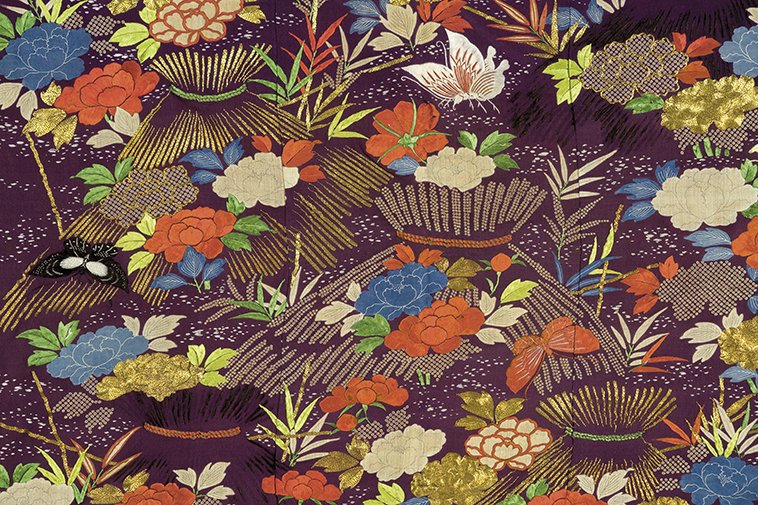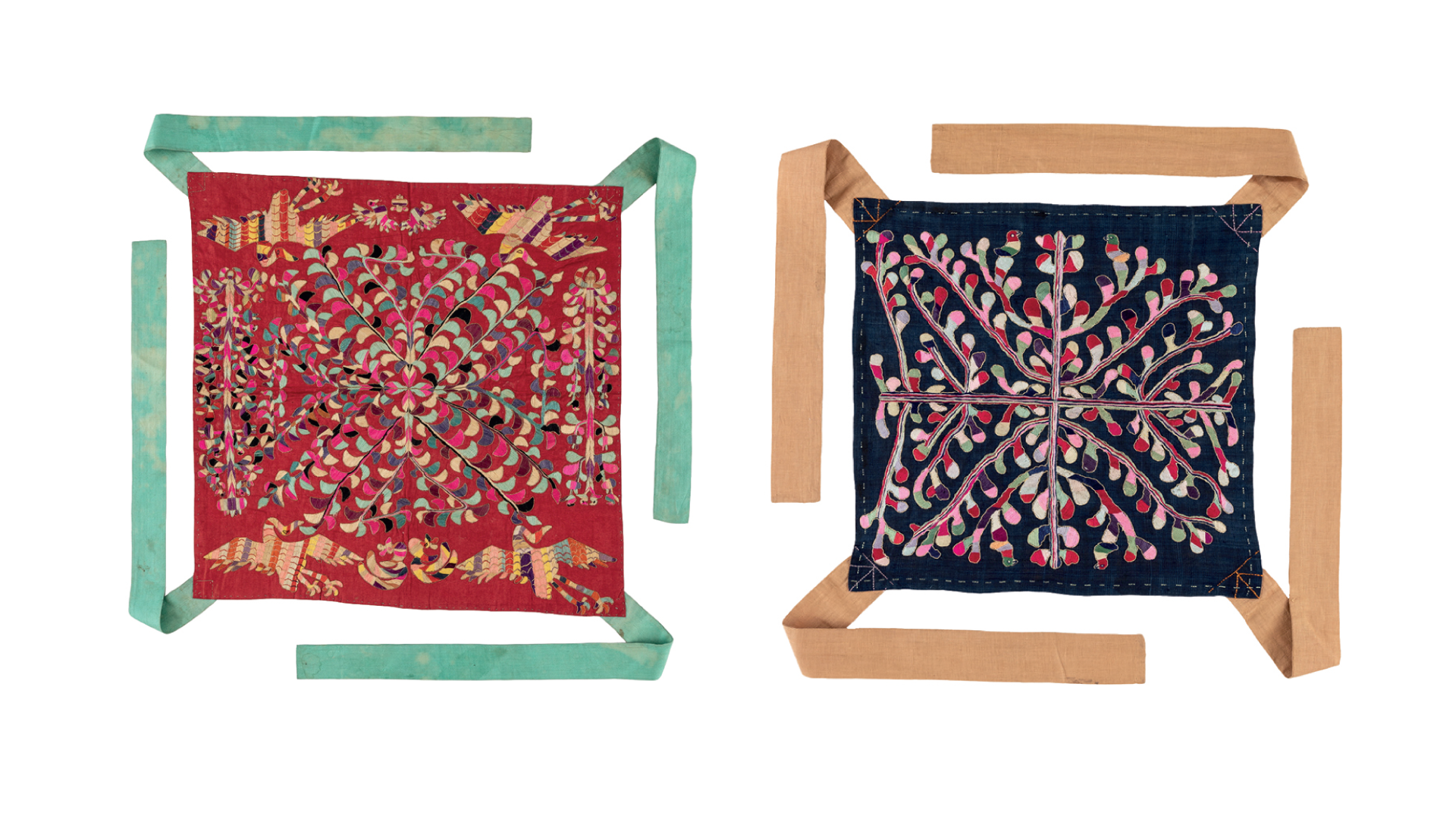Highlights

From Cocoons to Kaftans: Splendid Silks at the Sogdian Court in Samarkand
For those interested in the history of silk and the movement of materials, techniques, and motifs along the Silk Roads, the 7th century wall painting programme from the so-called ‘Hall of Ambassadors’ in the Sogdian city of Samarkand (in present-day Uzbekistan) offers a rich source of illuminating knowledge.

Japanese Gift Covers from the Chris Hall Collection
In Japan, squares of lined silk called fukusa were used to cover and exchange formal gifts. Exquisitely embroidered, woven, painted, and dyed, fukusa are some of the finest examples of Japanese textile artistry.

Stitches Empowered: Korean Embroidery Arts from the Joseon Dynasty
Toward the latter half of the Joseon dynasty (1392−1910), when the conservative interpretation of neo-Confucian teachings became mainstream, women, regardless of their social and economic status, increasingly faced rigid restrictions in all aspects of daily life. From 8 March to 26 July 2020, The Cleveland Museum of Art (CMA) and the Seoul Museum of Craft Art will pre-sent an exhibition titled ‘Golden Needles: Embroidery Arts from Korea’ in CMA’s Arlene M. and Arthur S. Holden Textile Gal-lery and Korea Foundation Gallery. This special exhibition explores Korean fine embroidered works as tools of empowerment for women to overcome social constraints and to define their own cultural identity.
